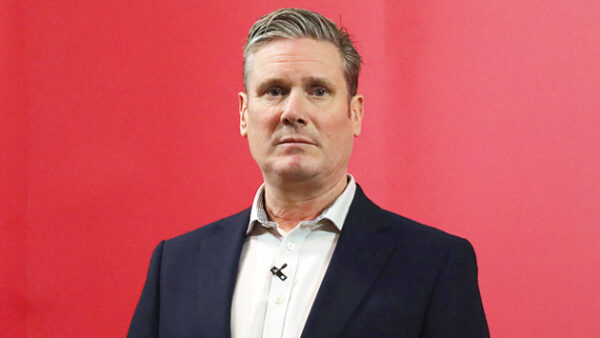Julie Fleck RTPI OBE, currently on secondment to the government’s Office for Disability Issues, on a campaign to upskill built environment professionals on inclusive design.
The full version of this blog was originally posted on the CIC’s website here

Julie Fleck
The London 2012 Olympic and Paralympic Games – the most accessible ever – demonstrated what a difference embedding inclusive design principles and processes into a development project from the outset can make.
For many disabled people the standard of accessibility was a unique experience. A wide range of architects, designers, planners, surveyors, engineers, technicians, and many other built environment professionals, contributed directly to the accessibility and inclusivity of the London 2012 Games.
The London Legacy Development Corporation (LLDC) is now taking forward the inclusive design principles and processes used to deliver the Games in the new neighbourhoods now being developed in and around Queen Elizabeth Olympic Park (QEOP). The LLDC is maintaining, if not exceeding, the levels of accessibility and inclusion achieved in 2012, providing a unique model of best practice and a benchmark for achieving an inclusive environment.
Unfortunately, this is not the case in many development projects – there are still examples of new and recently refurbished buildings and environments where the attention to detail that makes a building or space comfortable, easy and safe to use is not evident, has been overlooked, or even value engineered out of the scheme.
Making the physical environment accessible from the outset makes it easier to ensure that buildings, facilities and services remain accessible and inclusive once occupied or when future alterations are made – a more sustainable and cost-effective approach to whole-life considerations.
Disabled people in particular can still experience unnecessary barriers when using our built environment. Common examples include:
- Step-free access designed as the secondary route, not on the “desire line”;
- lifts remote from the stairs;
- ramps where altered landscapes could result in gentle slopes or a level approach;
- ramps that cut through steps, creating uneven risers which can be hazardous for visually impaired people;
- handrails that stop short of the last step;
- step nosing indistinguishable from the rest of the tread;
- seats without arms or backrests;
- doors that are too heavy to open to their full opening width;
- manifestation that is indistinguishable from the glazing;
- confusing and disorienting layouts, which make way-finding difficult;
- poor or inconsistent signage;
- lack of tonal contrast to highlight features.
Yet this need not be the case – in fact, it should not be the case. It is possible for all projects both large and small to achieve a high level of inclusivity, provided the issues have been considered and addressed from the beginning.

The London 2012 Olympic and Paralympic Games have embedded inclusive design principles
The Paralympic Games helped to shift attitudes towards disabled people. With a spending power of more than £212bn, disabled people and their families contribute significantly to the economy and do not expect to be left behind – expectations of being able to access and use our buildings and spaces in the same way as everyone else continue to rise.
The ageing population is another key driver for achieving a more inclusive environment. An increasing number of older people are continuing to lead active and independent lives but can only do so if we design our buildings, places and spaces to be accommodating, comfortable, safe and accessible for everyone to enjoy. The moral, legal, professional, sustainable and economic case for inclusion is clear.
One aim of the government’s Olympic and Paralympic Legacy programme is to make inclusive design a lasting Paralympic legacy. So making it a required part of built environment education, by embedding inclusive design principles and processes into the training and education of built environment professionals from the outset of their education, will help achieve this.
Read related article
Deaf people work well in our industry – if we stop thinking of H&S as a barrier
The joint government/mayor of London Built Environment Professional Education Project (BEPE) is working with the key professional institutions [including the CIOB] to stimulate a systematic change in the way built environment professionals are taught inclusive design.
The Construction Industry Council and the Engineering Council, along with 15 other professional institutions and construction industry organisations, support BEPE. Achieving an inclusive environment is in fact integral to the ethical and sustainability principles guiding built environment professionals.
Changes are gradually being made. The Chartered Institute of Architectural Technologists and the British Institute of Facilities Management have both amended their professional standards. The Royal Institution of Chartered Surveyors is reviewing its Assessment of Professional Competence processes and have committed to embedding inclusive design. The Landscape Institute has just recorded a webinar on inclusive design and the BEPE project, which you can listen to here.
Higher education institutions are also now being inspired to teach inclusive design consistently and effectively. For example, the University of Reading has just launched its Breaking down Barriers Project.
Educational resources for those new to inclusive design or who need to know more about the topic can be found on the Design Council CABE’s Inclusive Design Hub which includes the latest guidance and advice about inclusive design. CABE is also now developing an online training project of high-quality, cross-disciplinary training on delivering an inclusive environment – relevant to all built environment professionals.
You can help make inclusive design a lasting Paralympic legacy.
Julie Fleck is principal access adviser at the Greater London Authority (GLA), responsible for the London Plan policies on inclusive design and provides technical advice on the accessibility of planning schemes referred to the mayor










